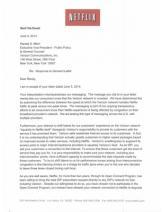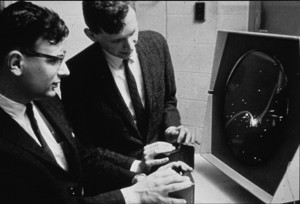 How Punch-Out save game passwords work, including bugs http://tomorrowcorporation.com/posts/retro-game-internals-punch-out-passwords …
How Punch-Out save game passwords work, including bugs http://tomorrowcorporation.com/posts/retro-game-internals-punch-out-passwords …
 Chrome moving Service Worker's fetch() API to the window. Like XHR but with promises
http://updates.html5rocks.com/2015/03/introduction-to-fetch … via @ChromiumDev
Chrome moving Service Worker's fetch() API to the window. Like XHR but with promises
http://updates.html5rocks.com/2015/03/introduction-to-fetch … via @ChromiumDev
 Just got covered in spit up. Ah yes, I remember how babies work now. https://m.youtube.com/watch?v=Ng0olzfFzog …
Just got covered in spit up. Ah yes, I remember how babies work now. https://m.youtube.com/watch?v=Ng0olzfFzog …
 If you're a technology worker who has any access to sensitive keys or secrets, read all the way
through this piece. https://firstlook.org/theintercept/2015/02/19/great-sim-heist/ …
If you're a technology worker who has any access to sensitive keys or secrets, read all the way
through this piece. https://firstlook.org/theintercept/2015/02/19/great-sim-heist/ …
 Polygon ✔ @Polygon :
Polygon ✔ @Polygon :
Netflix responds to Verizon’s cease & desist letter. Somehow I doubt that Verizon will bite on your offer to work together to increase network transparency Netflix. Nice suggestion though.
I've put a new app on the Windows Store: Cloud Share. It connects the web to your Windows 8 share charm.
I did the development on GitHub and quite enjoyed myself. I wasn't sure I liked the game-ification of development in GitHub's dashboard showing you your longest development streak in days. However I realized that it encourages me to do work on my personal project and anything that aids in holding my attention on and helping me finish these projects is a good thing.
Some time back while I was working on getting the Javascript Windows Store app platform running on Windows Phone (now available on the last Windows Phone release!) I had an interesting bug that in retrospect is amusing.
I had just finished a work item to get accessibility working for JS WinPhone apps when I got a new bug: With some set of JS apps, accessibility appeared to be totally broken. At that time in development the only mechanism we had to test accessibility was a test tool that runs on the PC, connects to the phone, and dumps out the accessibility tree of whatever app is running on the phone. In this bug, the tool would spin for a while and then timeout with an error and no accessibility information.
My first thought was this was an issue in my new accessibility code. However, debugging with breakpoints on my code I could see none of my code was run nor the code that should call it. The code that called that code was a more generic messaging system that hit my breakpoints constantly.
Rather than trying to work backward from the failure point, I decided to try and narrow down the repro and work forwards from there. One thing all the apps with the bug had in common was their usage of WinJS, but not all WinJS apps demonstrated the issue. Using a binary search approach on one such app I removed unrelated app code until all that was left was the app's usage of the WinJS AppBar and the bug still occurred. I replaced the WinJS AppBar usage with direct usage of the underlying AppBar WinRT APIs and continued.
Only some calls to the AppBar WinRT object produced the issue:
var appBar = Windows.UI.WebUI.Core.WebUICommandBar.getForCurrentView();
// appBar.opacity = 1;
// appBar.closeDisplayMode = Windows.UI.WebUI.Core.WebUICommandBarClosedDisplayMode.default;
appBar.backgroundColor = Windows.UI.Colors.white; // Bug!
I eventually realized that predefined WinRT color values like Windows.UI.Colors.aqua would cause the issue while JS literal based colors didn't cause the issue (Windows.UI.Color is a WinRT struct which projects in JS as a JS literal object with the struct members as JS
object properties so its easy to write something like {r: 0, g: 0, b: 0, a: 0} to make a color) and I had been mixing both in my tests without realizing there would be a difference.
I debugged into the backgroundColor property setter that consumed the WinRT color struct to see what was different between Windows.UI.Colors.black and {a: 1, r: 0, g: 0, b: 0} and
found the two structs to be byte wise exactly the same.
On a hunch I tried my test app with only a reference to the color and otherwise no interaction with the AppBar and not doing anything with the actual reference to the color:
Windows.UI.Colors.black;. This too caused the issue. I knew that the implementation for these WinRT const values live in a DLL and guessed that something in the code to create these
predefined colors was causing the issue. I debugged in and no luck. Now I also have experienced crusty code that would do exciting things in its DllMain, the function that's called when a DLL is loaded into the process so I tried modifying my
C++ code to simply LoadLibrary the DLL containing the WinRT color definition, windows.ui.xaml.dll and found the bug still occurred! A short lived moment of relief as the world seemed to make
sense again.
Debugging into DllMain nothing interesting happened. There were interesting calls in there to be sure, but all of them behind conditions that were false. I was again stumped. On another hunch I tried renaming the DLL and only LoadLibrary'ing it and the bug went away. I took a different DLL renamed it windows.ui.xaml.dll and tried LoadLibrary'ing that and the bug came back. Just the name of the DLL was causing the issue.
I searched for the DLL name in our source code index and found hits in the accessibility tool. Grinning I opened the source to find that the accessibility tool's phone side service was trying to determine if a process belonged to a XAML app or not because XAML apps had a different accessibility contract. It did this by checking to see if windows.ui.xaml.dll was loaded in the target process.
At this point I got to fix my main issue and open several new bugs for the variety of problems I had just run into. This is a how to on writing software that is difficult to debug.
A reminder that those Doritos you love are trash:
Shortly after Disneyland opened in 1955, the founder of Frito-Lay got permission from Walt Disney to open a restaurant in Frontierland with a Mexican-ish theme. “Casa de Fritos” was, unsurprisingly, all about the Fritos. Customers got free Fritos, and Fritos were incorporated into many of the dishes. Fritos were dispensed by an animatronic vending machine that featured the terrifying “Frito Kid”asking his assistant “Klondike” to bring the bag up from a mineshaft. I guess the conceit is that Fritos were mined by Forty-Niners?
Casa de Fritos contracted their tortilla production to a company called Alex Foods. One of the salesmen from Alex Foods, making a delivery to Casa de Fritos, noticed stale tortillas in the garbage and gave the cook a little tip: fry them and sell them as chips instead of throwing them away. Casa de Fritos began making these fried, seasoned chips to enormous success, but didn’t report this new menu item to the Frito-Lay company.
Eventually Frito-Lay found out what they were doing with the chips, packaged them, and sold them by the truckload. See, dumpster diving works out sometimes!

Internet Archive lets you play one of the earliest computer games Space War! emulated in JavaScript in the browser.
This entry covers the historical context of Space War!, and instructions for working with our in-browser emulator. The system doesn’t require installed plugins (although a more powerful machine and recent browser version is suggested).
The JSMESS emulator (a conversion of the larger MESS project) also contains a real-time portrayal of the lights and switches of a Digital PDP-1, as well as links to documentation and manuals for this $800,000 (2014 dollars) minicomputer.
totally free photos for your commercial & personal works
Windows Registry Editor Version 5.00
[HKEY_LOCAL_MACHINE\SOFTWARE\Microsoft\Internet Explorer\Main\FeatureControl\FEATURE_BROWSER_EMULATION]
"Fitbit Connect.exe"=dword:000022b8
Param([Parameter(Mandatory=$true)][string]$Path);
$excel = New-Object -ComObject Excel.Application
$xlWindows=2
$xlDelimited=1 # 1 = delimited, 2 = fixed width
$xlTextQualifierDoubleQuote=1 # 1= doublt quote, -4142 = no delim, 2 = single quote
$consequitiveDelim = $False;
$tabDelim = $False;
$semicolonDelim = $False;
$commaDelim = $True;
$StartRow=1
$Semicolon=$True
$excel.visible=$true
$excel.workbooks.OpenText($Path,$xlWindows,$StartRow,$xlDelimited,$xlTextQualifierDoubleQuote,$consequitiveDelim,$tabDelim,$semicolonDelim, $commaDelim); When writing a JavaScript library that uses postMessage and the message event, I must be considerate of other JS code that will be
running along side my library. I shouldn't assume I'm the only sender and receiver on a caller provided MessagePort object. This means obviously I should use addEventListener("message" rather than
the onmessage property (see related What if two programs did this?). But considering the actual messages traveling
over the message channel I have the issue of accidentally processing another libraries messages and having another library accidentally process my own message. I have a few options for playing nice
in this regard:
When writing a JavaScript library that uses postMessage and the message event, I must be considerate of other JS code that will be
running along side my library. I shouldn't assume I'm the only sender and receiver on a caller provided MessagePort object. This means obviously I should use addEventListener("message" rather than
the onmessage property (see related What if two programs did this?). But considering the actual messages traveling
over the message channel I have the issue of accidentally processing another libraries messages and having another library accidentally process my own message. I have a few options for playing nice
in this regard:|
WinRT (JS and
C++)
|
JS Only
|
C++ Only
|
.NET Only
|
|
|
Parse
|
|
|||
|
Build
|
||||
|
Normalize
|
||||
|
Equality
|
|
|
||
|
Relative
resolution
|
||||
|
Encode data for
including in URI property
|
||||
|
Decode data extracted
from URI property
|
||||
|
Build Query
|
||||
|
Parse Query
|
 [Testing Cat-Human Translator] Scientist: Cat, what is your name? Cat: I AM KANG THE
DESTROYER Owner: It's not working. His name is Socks.
[Testing Cat-Human Translator] Scientist: Cat, what is your name? Cat: I AM KANG THE
DESTROYER Owner: It's not working. His name is Socks.